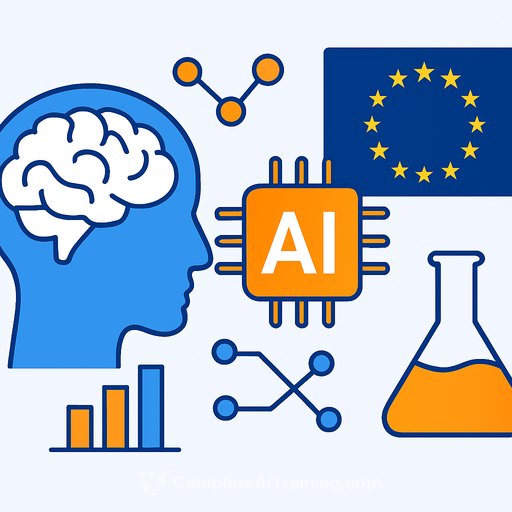Meta’s AI Forest Map: The Game-Changer for Carbon Tracking
August 12, 2025 | Updated: August 11, 2025
Forests play a crucial role in fighting climate change by absorbing around 30% of human-caused CO2 emissions each year. They act as natural carbon sinks, storing carbon in biomass and soil. To support efforts in forest protection and restoration, scientists and project managers need accurate data on how much carbon forests store. This process, known as measuring, monitoring, reporting, and verifying forest carbon (MMRV), is essential for effective climate action.
Remote Sensing: A New Perspective on Forest Monitoring
Traditional methods of measuring carbon in forests involve manual tree measurements, which are costly and time-consuming, especially across large or hard-to-reach areas. Remote sensing offers an alternative by collecting data from satellites, airplanes, or drones. This technology captures images and measurements that reveal tree height, density, and overall forest structure without physical presence.
Remote sensing uses various data types:
- Optical imagery: Photos from space or planes showing tree canopies and land features.
- Radar: Radio waves that penetrate clouds and work at night, though less precise in dense forests.
- Lidar: Laser-based 3D mapping of tree height and shape, highly accurate but expensive and limited in coverage.
Challenges in Remote Sensing Data
Each remote sensing method has strengths and limits. Optical images can't see through clouds and only capture surface details. Radar works in all weather but struggles with fine details in dense forests. Lidar is precise but costly and covers smaller areas. Combining these data types with artificial intelligence (AI) and machine learning improves accuracy by identifying patterns in large datasets.
Meta’s Canopy Height Map: Detailed Forest Data Through AI
Meta developed an AI model that integrates high-resolution satellite images with lidar data to map tree canopy heights worldwide at a resolution of less than one meter per pixel. This level of detail allows for individual tree detection in many regions.
Both the map and AI model are open-source and freely accessible. They support forest project developers in planning, monitoring, and verifying forest carbon initiatives. According to Reza Rastegar, Senior Manager of Research Science at Meta, such open-source AI and remote sensing tools can significantly improve transparency and accessibility in carbon markets.
Validation tests show mean absolute errors of 2.8 meters in U.S. forests and 5.1 meters in Brazil, marking a strong step forward in canopy height estimation. These datasets enable better tracking of natural forest regeneration, selective logging, and degradation—key factors for credible MMRV of carbon credits.
Key Features of Meta’s Model
- Global coverage with fine spatial resolution
- Ability to identify priority areas for conservation or restoration
- Capability to generate updated maps over time when new imagery is available
- Detection of small forest changes, such as selective logging
- Support for dynamic baselining aligned with carbon credit standards
From Data to Climate Impact: Supporting Carbon Credit Methods
Forest carbon projects use official protocols to create and validate carbon credits. Meta’s canopy height map aligns with three key methods:
- Verra VM0045: Improved forest management (IFM)
- Verra VM0047: Afforestation, reforestation, and revegetation (ARR)
- American Carbon Registry (ACR) IFM: U.S.-based improved forest management method
In practice, Meta’s AI model assists by:
- Identifying suitable forest parcels and defining project boundaries during planning
- Updating baselines dynamically to reflect real forest growth or loss over time
- Detecting disturbances like fires or logging for reversal monitoring
Strengths and Limitations of Meta’s Model
Many satellite products struggle to measure forest height or biomass accurately, especially in dense or small forest patches. Meta’s high-resolution imagery helps address these gaps, improving monitoring of fragmented forests, river corridors, and selective logging areas.
However, the model depends on imagery at 0.5–1 meter resolution, and the global map covers data from 2009 to 2020. This means it may not fully reflect current forest conditions, highlighting the need for updated datasets. Accuracy can vary in less-represented forest types, so local validation using field or lidar data is recommended.
Additionally, applying the model requires considerable computing resources and technical skills, which could limit widespread use. The forest carbon sector still faces challenges like lack of universal agreement on acceptable remote sensing methods, limited access to affordable datasets, and inconsistent standards for accuracy and uncertainty.
Bridging Innovation and Practical Use
Experts call for clearer standards on dataset use, improved reporting on uncertainty, and standardized rules for issuing carbon credits. Establishing a global benchmarking database and a central portal for quality datasets could boost trust and adoption.
Making AI tools more accessible and integrating models like Meta’s into user-friendly platforms will help scale reliable forest carbon monitoring and verification. Collaborative efforts on standards and data sharing remain key to advancing forest climate projects.
Practical Applications of Meta’s Canopy Height Map
- Counting trees in agroforestry projects to evaluate performance
- Mapping old-growth forests and biodiversity hotspots
- Detecting subtle forest degradation such as selective logging
- Monitoring carbon loss events with increased accuracy
- Supporting better estimates of above-ground biomass
Forests are essential for carbon storage and climate mitigation. Accurately measuring their carbon content over time is challenging but critical. Remote sensing technologies, combined with AI, are making this process faster, more precise, and more cost-effective. Meta’s AI-powered canopy height map offers detailed, global forest data that supports better forest carbon project planning, monitoring, and verification.
For professionals interested in AI applications in environmental science and remote sensing, exploring related training can be valuable. Learn more about advanced AI courses and tools at Complete AI Training.
Your membership also unlocks:





